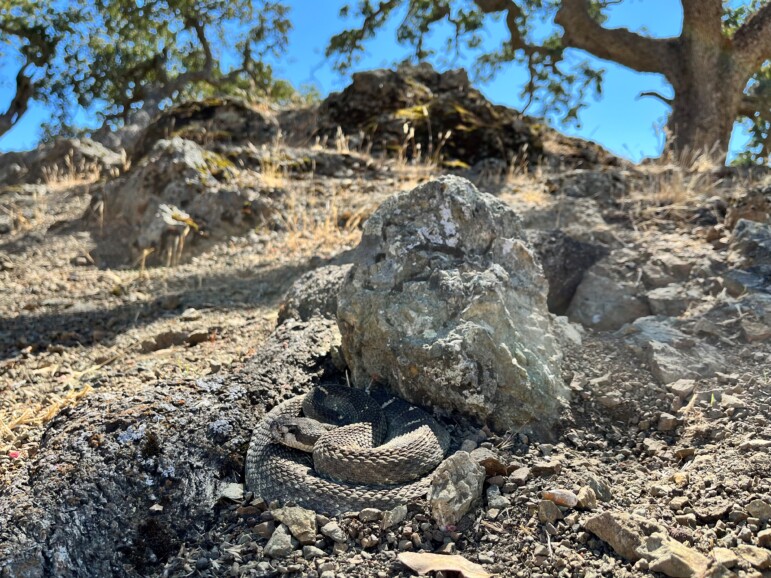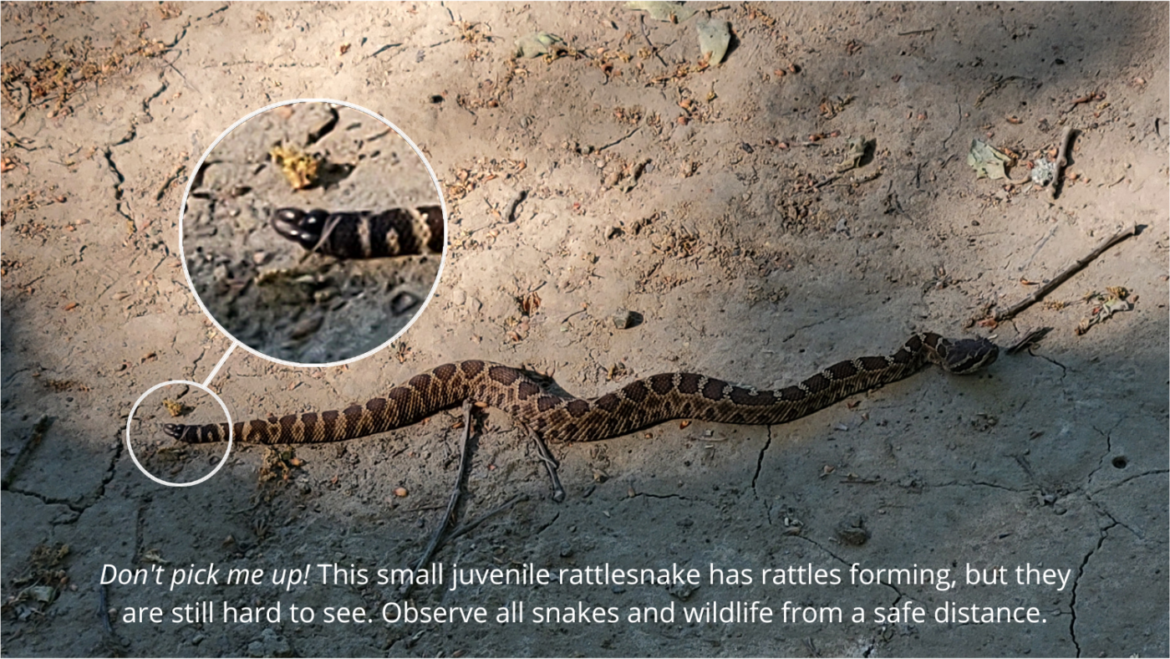From an EBRPD press release on Tuesday, April 30:
In early spring, snakes emerge from winter hibernation and become more active. Rattlesnakes are native to California and occur in a variety of wildland habitats, as well as in rural and urban areas. Rattlesnakes are more active in warm weather, which can lead to more encounters with humans and dogs, especially along trails and roads. Visitors are encouraged to keep snake safety precautions in mind when visiting East Bay Regional Parks throughout the spring, summer, and fall seasons.
Snakes are an important resource in the natural environment. They are prime controlling agents of rodents and other reptile populations. Enjoy them from afar and leave them where they are found. Collecting, killing, or removing any plants or animals from the Park District is illegal. Please help protect all wildlife and their environment.

Rattlesnake Safety Tips
- Avoid hiking alone so you have help in case of emergency.
- Scan the ground ahead of you as you walk, jog, or ride.
- Stay on trails and avoid walking in tall grass.
- Look carefully around and under logs and rocks before sitting down.
- Listen for the buzz of a rattlesnake’s rattle warning you it is there.
- Avoid placing your hands or feet where you cannot see clearly.
- For maximum safety, consider keeping your dog on a leash.
What to Do If You See a Rattlesnake
Leave it alone – do not try to capture or harm it. All native wildlife is protected by law, and it is safest to leave it alone. If you see a snake, do not approach. Move carefully and slowly away or around it while giving it plenty of space.
What to Do If Bitten by a Snake
- If bitten by a rattlesnake, stay calm and have someone call 911. Remain calm by lying down with the affected limb lower than the heart. Getting medical attention quickly is critical – do not use tourniquets, “sucking,” or snake bite kits. If you are by yourself, walk calmly to the nearest source of help to dial 911. Do not run.
- If bitten by any other type of snake, wash the wound with soap and water or an antiseptic and seek medical attention.
- If you are unsure what kind of snake bit you, check the bite for two puncture marks (in rare cases one puncture mark) associated with intense, burning pain. This is typical of a rattlesnake bite. Other snakebites may leave multiple teeth marks without associated burning pain.
- You do not need to identify the specific type of rattlesnake to receive the correct antivenom. The Northern Pacific rattlesnake is the species found in East Bay Regional Parks.
Download the Park District’s Common Snakes brochure or watch our Gopher Snake or Rattlesnake video to learn how to tell the difference between rattlesnakes and gopher snakes. Additional information is available at ebparks.org/safety/wildlife-encounters.
